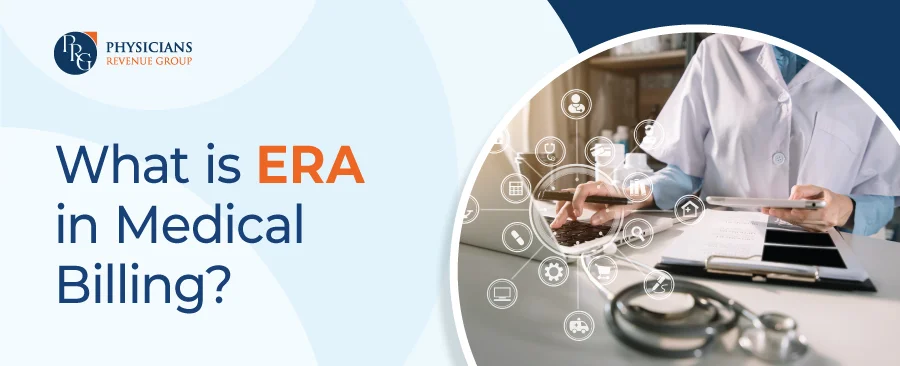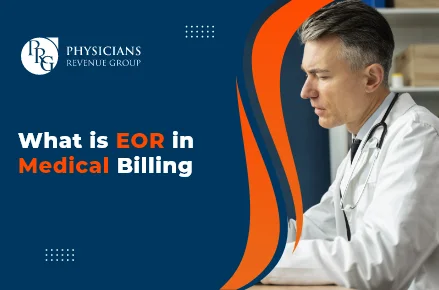
Email: info@prgmd.com | Call: +1 (630) 242-6474
Business hours: 9:00 to 5:00 | Monday to Friday
Email: info@prgmd.com | Call: +1 (630) 242-6474
Business hours: 9:00 to 5:00 | Monday to Friday

Table of Contents
ToggleThe ERA stands for “Electronic Remittance Advice” and is used electronically when and where the need for EOBs is negligible.
But –what is ERA in medical billing? Healthcare providers always seek claim acceptance in the first go. Thus, it becomes essential for providers to eliminate repeating errors from the claims. However, this is only possible if the medical billing service staff is trained and efficient enough to read and understand EOB and ERA accurately.
Experts still believe that there remains a chance of errors in medical billing claims – which become the reason for subsequent claim denials. Let’s explore how EOB/ERA effectively boosts reimbursements and collection rates – but before we must understand in-depth:
Medical billing is an essential function of most modern healthcare practices. When your medical practice sends data to an insurance company or a patient – it employs various processes. These processes include ERA for navigating the complex HIPAA requirements and the insurance allowances. ERAs, essentially in medical environments, are virtual copies of EOBs (explanation of benefits) from paying entities.
There is rampant confusion between ERAs and EOBs – while both offer similar information, these do differ in formats. EOBs come as a hard copy through your mail service; however, you receive ERAs digitally for storage in your computerized infrastructure.
EOB and ERA play a vital role in the medical industry, assisting in the confirmation of information related to:
These tools provide clarity on the following:
By obtaining this information, healthcare professionals can efficiently manage reimbursement collections, staying informed on what needs collection and payment. To track patient liabilities accurately, providers input details into EOB management systems.
Entering data into billing software offers several advantages, including:
In short, utilizing EOB and ERA in medical billing ensures a streamlined billing process, enhancing overall efficiency for healthcare providers.
Losing or misplacing a physical copy of patient information is a common challenge, even with the strictest filing protocols. Physical record-keeping has flaws and consumes valuable practice resources in terms of space and time.
While using Electronic Remittance Advice (ERA) in your practice brings efficiency, the digital organization allows easy accessibility for your staff members directly from their devices. The added advantage is the ability to log into a secure cloud from any device when needed.
ERAs are comprehensive repositories of essential information about a patient’s health plan and insurance company. ERA in medical billing typically includes:
Implementing ERA in your medical billing operations can bring substantial advantages. To fully take advantage of these benefits, it’s essential to have a reliable, HIPAA-compliant medical billing system in place. This system should not only keep all patient records secure but also make them accessible to authorized parties.
However, the challenge arises for many practices that lack the resources to develop such solutions independently. Fortunately, there is a solution. Medical billing services offered by third parties present scalable options that include the organization of ERAs within their comprehensive packages and simplifying healthcare financial management. The third-party billing services customize their solutions to align with strict HIPAA requirements, providing the means to enhance how your staff organizes data without compromising security.
Implementing ERA becomes a smooth process when integrated with third-party medical billing services. This ensures the optimization of organizational processes and compliance with the necessary security standards.
ERA is a HIPAA-compliant electronic substitute for traditional paper-based Explanation of Benefits (EOBs). It includes the same vital information as an EOB but comes with a quicker generation process and is less susceptible to errors. In medical billing, ERAs outline a patient’s:
Share:
Categories
Recently Added

What is an ABN in medical billing?

What does a Clearinghouse do During Claims Submission?

What is EOR in Medical Billing?
We Would Love to Assist You!
We treat your data confidentially and don’t share any information with a third party.